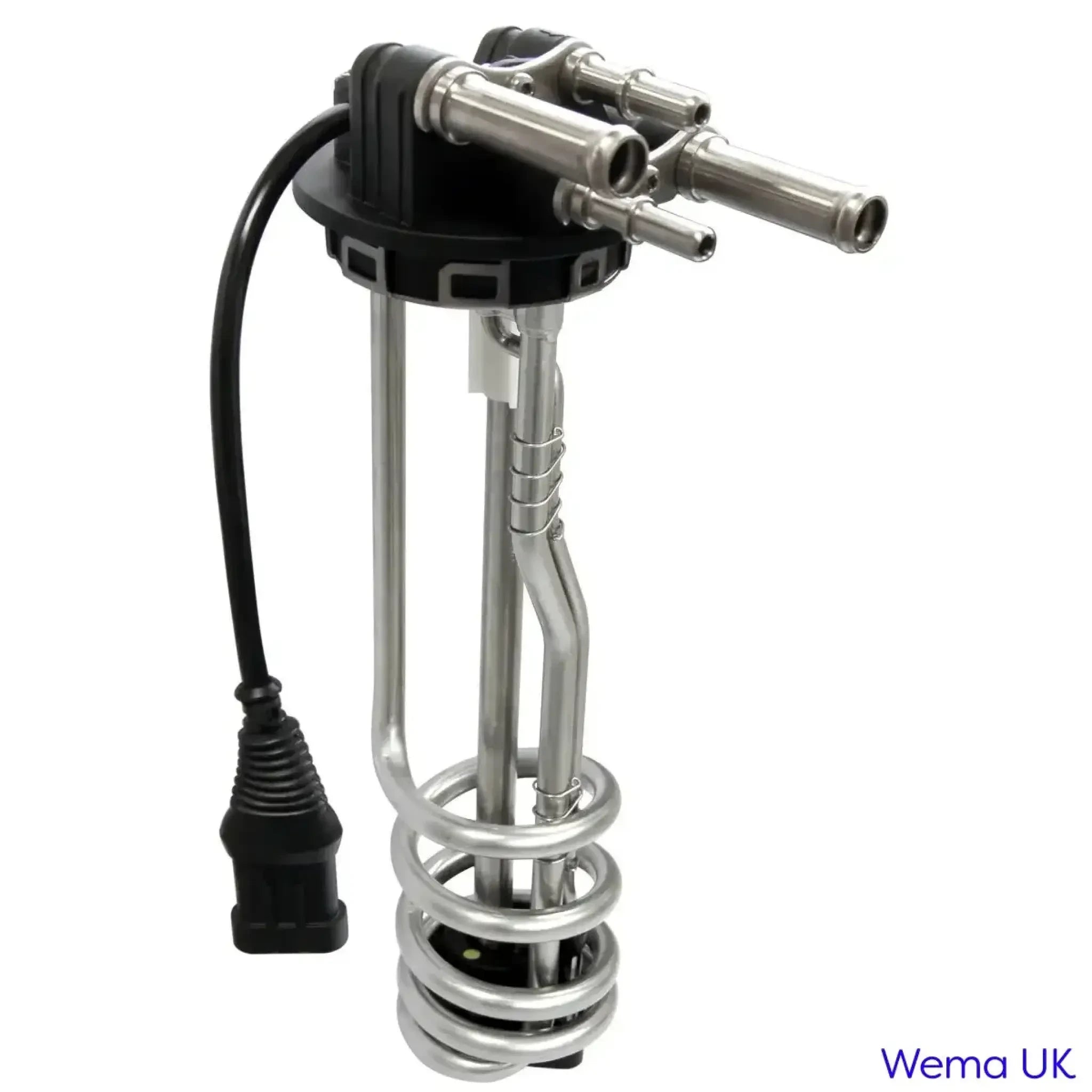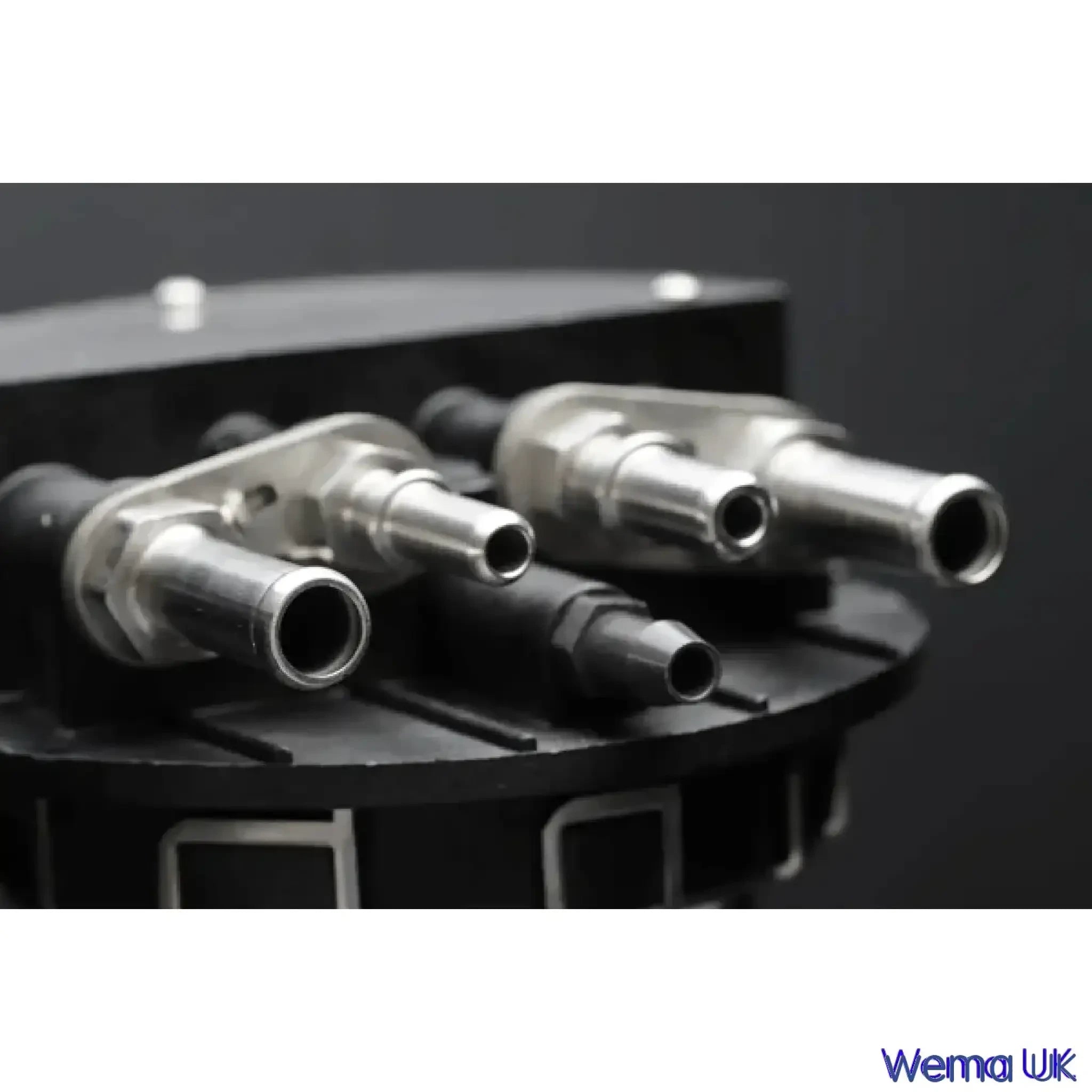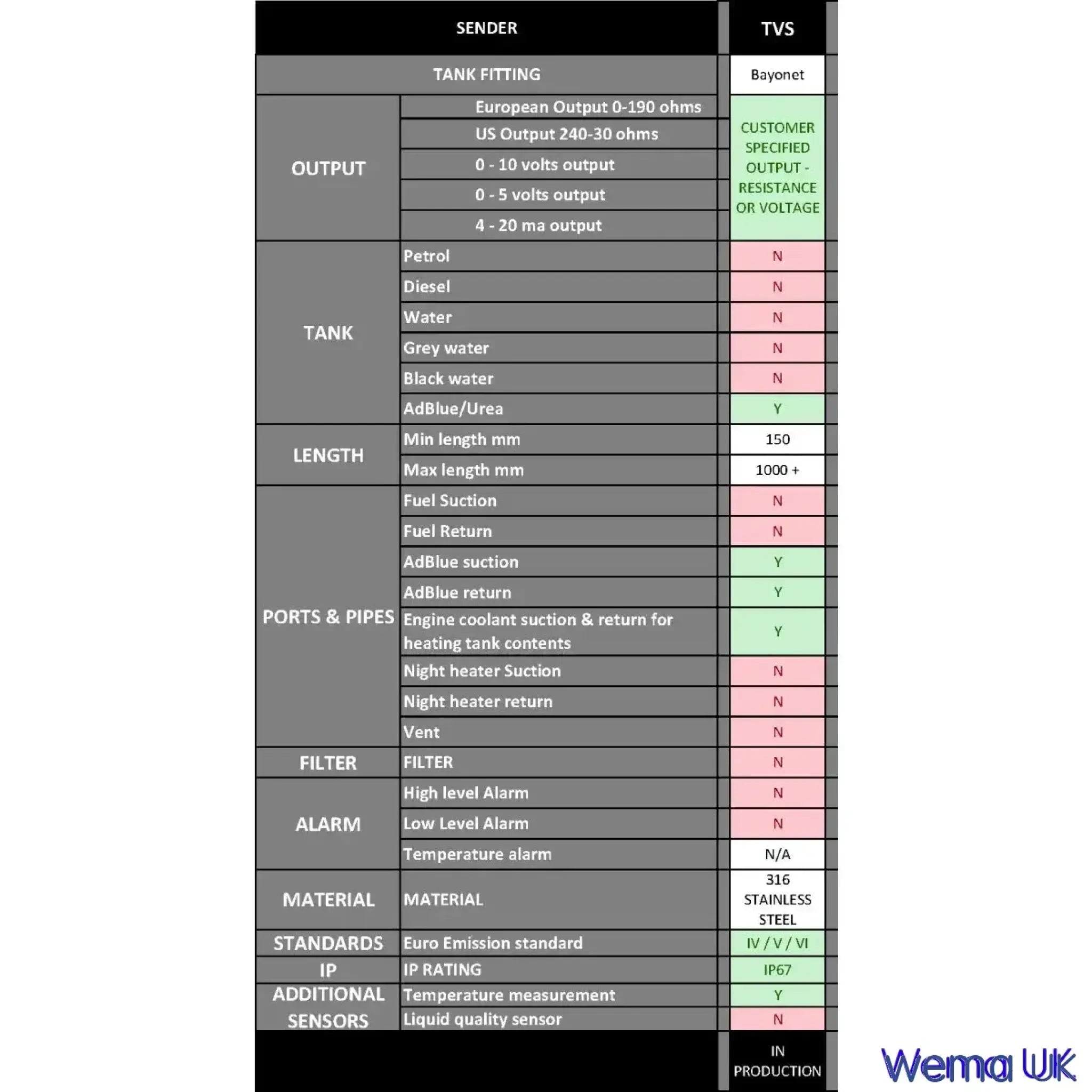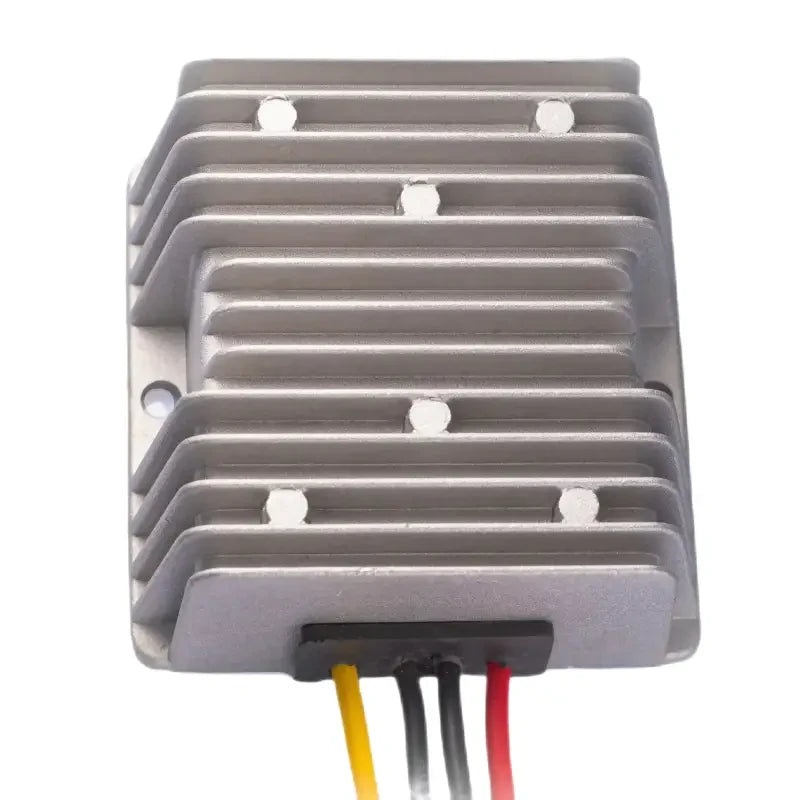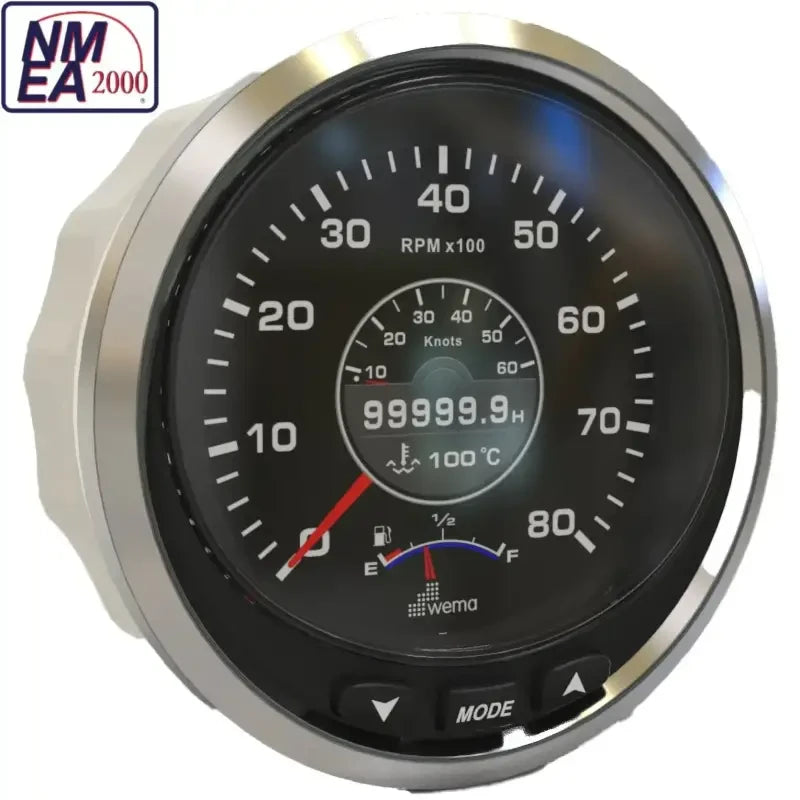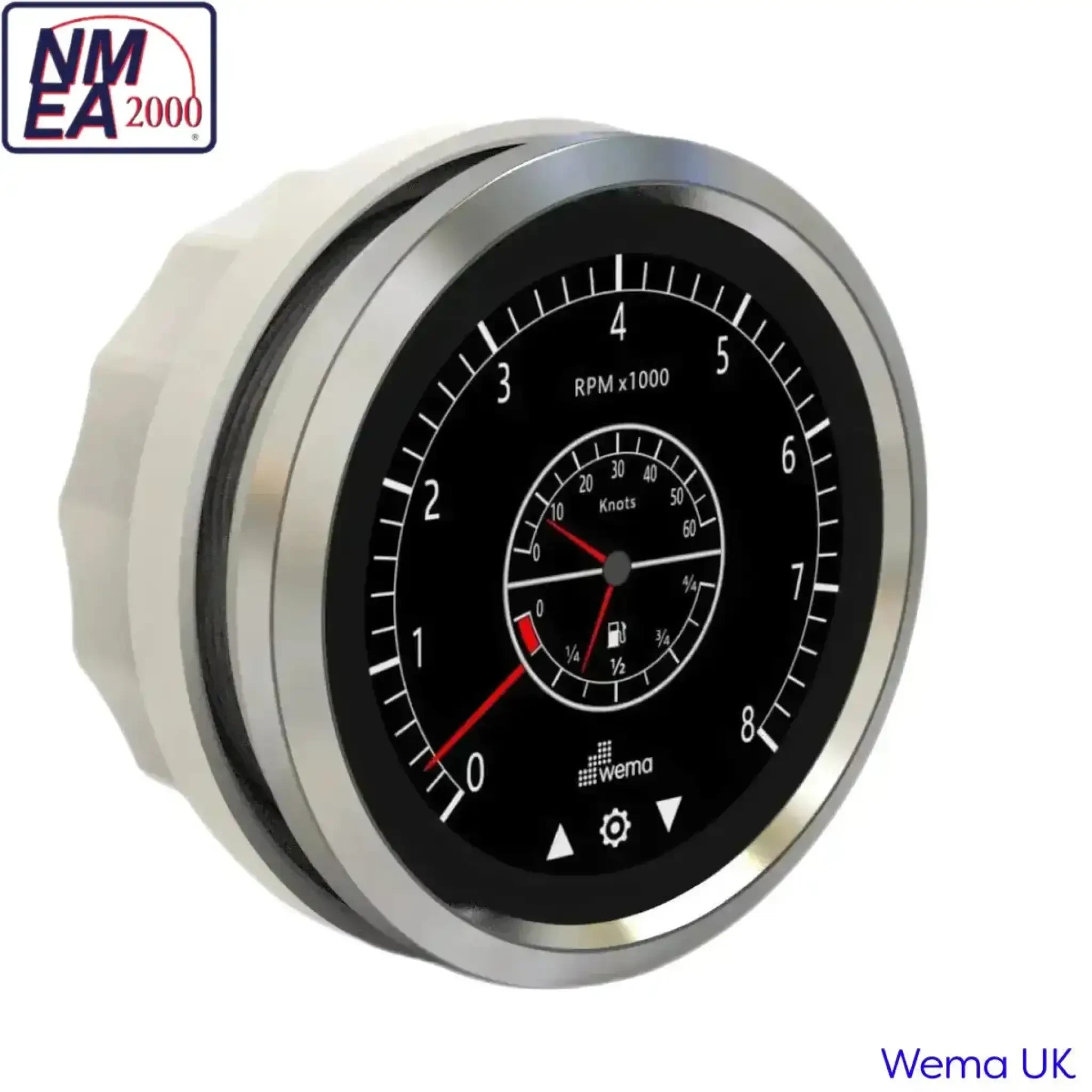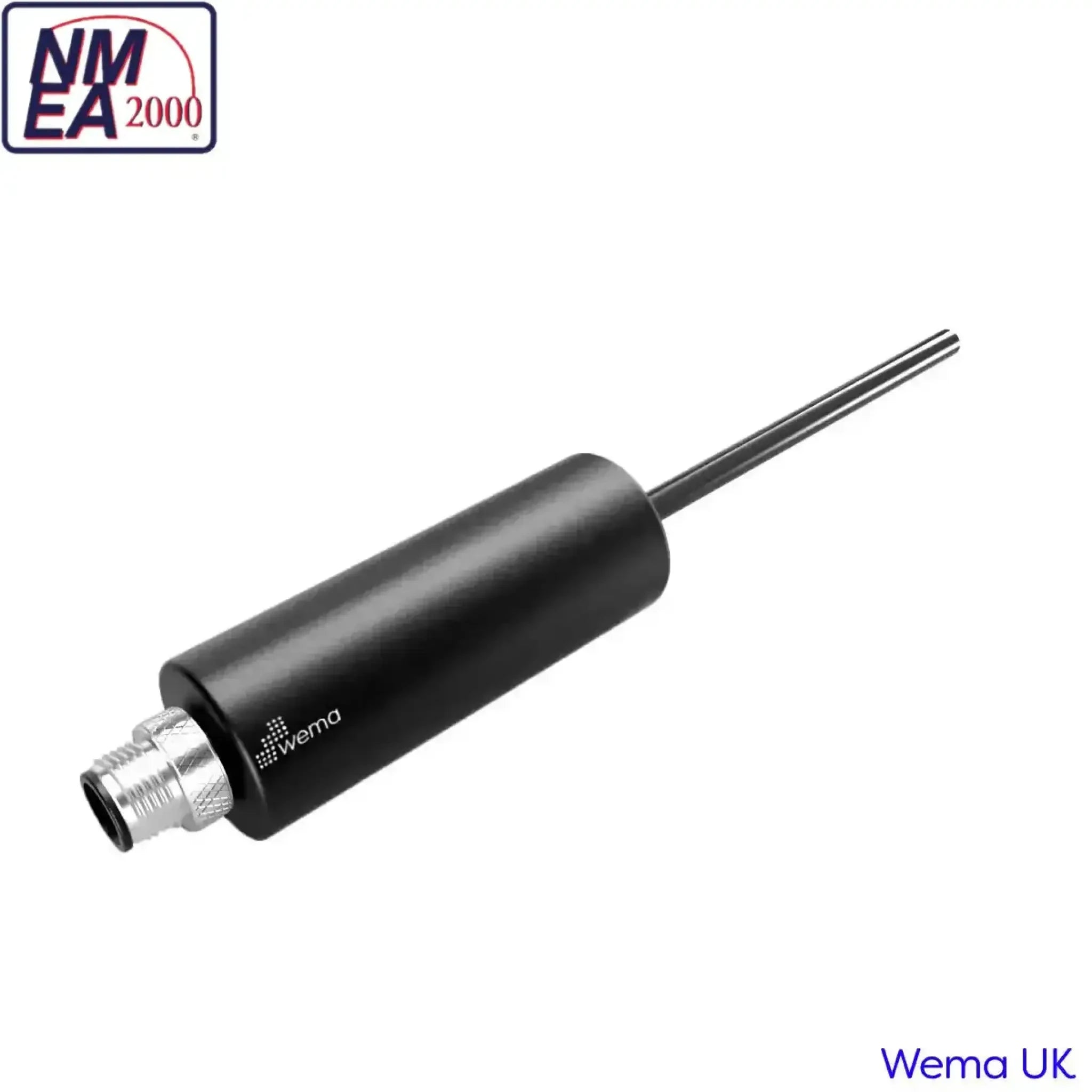Description
Truck & Bus Ad Blue Sender - TV3-S - Ad Blue sender fitted to trucks and buses.
The sender features a level sensor, AdBlue suction & return and ports for engine coolant that flows through a coiled heater pipe around the sensor to ensure fast and even heating of the AdBlue in cold conditions.
With so many variables; length, port size/thread, vent, resistance, filter etc., there are literally hundreds of different versions of this sender so it's always best to give us a call and we can make sure that we supply you with the correct unit for your vehicle.
For replacement senders we need to know the make and model of truck it's going into and also the manufacturer or Wema part number. This can be found stamped into the top of the sender. If in doubt, send us a photo for identification.
For new applications we need to know:
- Manufacturer (Scania, Volvo, M.A.N. etc)
- Length of sensor (and/or height of tank)?
- Resistance value (Empty Ohm (i.e. 10) and Full Ohm (i.e.180) =>10-180 Ω)?
- Fitting for suction – dimension and/or quick fit?
- Fitting for return – dimension and/or quick fit?
- Fitting for heater – dimension?
- Fitting for heater return – dimension?
- Electronic connector (e.g. DIN 2-4 pin or other)?
Designed to meet global emission legislations
Global emission legislations for
diesel engines are becoming increasingly stringent. While the exhaust gas composition requirements for prior iterations of emission legislation could be met with improvements in the engine’s combustion process, the next issue of European, North American and Japanese emission limits will require more rigorous measures, mainly employment of selective catalytic reduction (SCR) technology.
Wema, being the world wide leading manufacturer of AdBlue sensors, supplying 95% of all European SCR equipped trucks, makes an important contribution to efficient SCR operation. All sensors are custom made in terms
of length, dimensions of tubes, thawing capabilities, filter and electrical characteristics and can, furthermore be integrated with a Wema urea quality sensor.
The urea quality sensor addresses quality control concerns by ensuring a specific quality of urea is delivered into the exhaust gas stream. The introduction of a urea quality sensor into the SCR system
also reduces the risk of tampering or accidental mis-filling and helps ensure compliance, thus satisfying concerns of users and legislators alike. This contributes to the overall success of SCR as a NOx reduction technology.
One single unit- reducing for cost efficiency :
Interfacing the AdBlue quality sensor with a standard Wema AdBlue sensor, allows us to offer our customer a complete system, interfaced into one unit with features such as:
· High and low level indicator
· Suction and return of AdBlue
· Heating tubes for melting of frozen
AdBlue
· Temperature
· Filter
· Air vent
· AdBlue quality measurements · CANBus output for meeting
On- Board Diagnostic (OBD) requirement
Why use a urea quality sensor?
The benefits derived from Wema Urea quality sensor can be described from three aspects:
-
· Safety aspect
-
· Truck operator aspect
-
· Truck manufacturer aspect
Common feature for these aspects has proven to be:
-
· Diesel fuel is accidentally put on the AdBlue tank.
-
· Salt water is deliberately put on the AdBlue tank
-
· Truck driver is topping up the AdBlue tank with water
-
· Canisters are refilled and reused and AdBlue decanted to improper containers
-
· Rogue suppliers producing non-DIN specification AdBlue
Actually, industry sources indicate that up to 50% of truck drivers in certain European countries do not use AdBlue on their SCR trucks.
The consequences can be summarised as follows:
-
· Explosions and fire in catalyst due to
diesel in AdBlue tank
-
· Engine damage due to diesel in AdBlue
tank
· SCR ring gasket damages due to diesel in AdBlue tank
· Clogging of catalyst due to diesel or non compliance AdBlue
· Non compliance AdBlue will not meet emission legislations
· Non compliance AdBlue can incur costly torque penalties
· Non compliance AdBlue can incur financial penalties from authorities
· Non compliance AdBlue can cause warranty claims
· Running with poor quality AdBlue or diluted AdBlue may cause transport companies to suffer damage to their reputation for corporate responsibility
The Urea Quality Sensor provides the following benefits:
· It detects immediately if diesel fuel is
present in the AdBlue tank
· It can alarm the AdBlue dozing pump,
enabling it to stop injection of diesel and thereby preventing hazardous situations.
· It will immediately detect any non- compliance AdBlue
· It can instruct dozing unit to stop injection and thereby preventing any non compliance AdBlue from entering the catalyst
· It will report by CanBus to OBD any discrepancy from standard settings.
· It will assist in roadside checks or during annual testing by reporting the use of any non-compliance AdBlue
The choice of shipping options is calculated at the checkout.
The price and available shipping options will depend on your location as well as the size and weight of your order.
If you choose 'free delivery' or some Royal Mail services, the order may not be trackable for the duration of the journey and only show tracking events when the order is shipped and when it is delivered.
We aim to dispatch all morning (GMT) orders the same day and all orders received afternoon or at weekends the following business day.
Once your order has shipped you will be notified by email.
To supply a replacement fuel or water sender we just need to know:
-
What resistance is it?
-
How long is it?
-
How many wires does it have?
- What type of tank is it being fitted into?
- What is the Wema product code?
If your sender has information stamped on the head then we can identify your sender from the product code:
[Please note: the code 001300 refers to the S3 head and the code 001306 / 001305 refers to the S5 sender head]
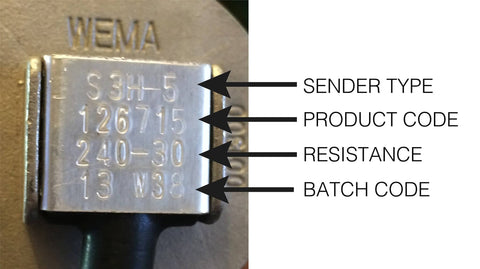
Do you have an S3 or S5 sender?
The S3 sender has a screw in head with a 1.25" BSP thread like this:
[NOTE: A 1.25" BSP (British Standard Pipe) thread will actually measure larger than 1.25 inches when measured with a tape measure. This is because a BSP measurement refers to the internal bore of a pipe (for accurate flow rate) and not the outside of the thread.]
The S5 sender has a bolt down head with 5 holes like this:
[NOTE: The 5-hole drill pattern in the top of an S5 sender head is a standard SAE-5-hole pattern.]
If you have a sender that is not an S3 or S5 then please click here
What resistance is your current sender and gauge?
The sender and gauge must have the same resistance values or the gauge will read incorrectly.
You can either test the gauge or the sender to find this out.
To test the sender:-
Disconnect the two wires on top of the sender.
-
Remove the sender from the tank.
-
Connect the wires on the sender to a multimeter.
-
Set the multimeter to resistance [Ω ohms]

-
Move the float to the top of the sender and take a reading on the multimeter:
-
At the top of the sender (full) the resistance should be:
-
European specification - 190 ohms
-
American specification - 30 ohms
-
Move the float to the bottom of the sender and take a second reading:
-
At the bottom of the sender (empty) the resistance should be:
-
European specification - 0 ohms
-
American specification - 240 ohms
If you have access to the wires on the back of the gauge;
-
Power the gauge off
-
Disconnect the black wire (sender)
-
Power the gauge on
-
If it's an American gauge the needle will show EMPTY
-
Touch the black wire to earth, the needle will go to FULL
-
If it's a European gauge the needle will show FULL
-
Touch the black wire to earth, the needle will go to EMPTY
If you don't have access to the back of the gauge;
-
Disconnect the two wires in the loom that attach to the sender.
-
If it's an American gauge the needle will show EMPTY
-
If it's a European gauge the needle will show FULL
Length?
To measure an S3 or S3H sender (with screw in head) measure from the top of the thread to the bottom of the stem.
To measure an S5 sender (with bolt down head) measure from the underside of the flange to the bottom of the stem
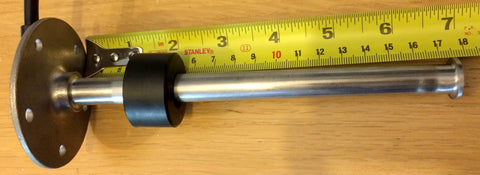
How many wires?
If your S5 or S3 sender has 2 wires then it is a standard resistance sender.
If your S5 or S3 sender has 3 or 4 wires then it is either a 0-5v, 0-10v sender or it has a high/low level alarm.
If you have a 3 or 4 wire sender then please contact us before ordering.
If your sender has a high or low level alarm we will need to know if the switch is normally off (when the tank is empty), turning on when the tank is full or normally on, turning off when the tank is full. We will also need to know how far from the top or bottom of the sender you would like the alarm switch to be.
Tank Contents?
For fuel or water then you can fit the maximum length of sender for your tank.
For a black water holding tank we recommend leaving at least 50mm from the bottom of the tank regardless of the material the tank is made from.
If you tank does not contain fuel, fresh water, grey water or black water then please contact us for more specific information. For very thick liquids like oil or grease we may need to know the viscosity.
Wema Sender Identification Chart
(click here for larger view)





